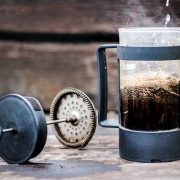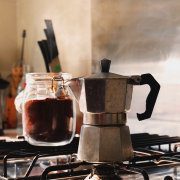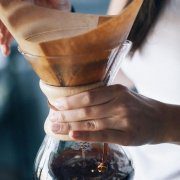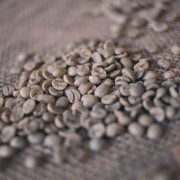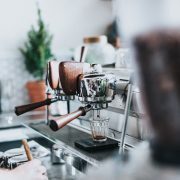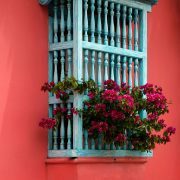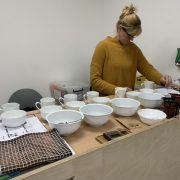French press
A very easy method to make great coffee at home every morning is the French press, also known as the coffee plunger.
In fact, the press was invented and patented for the first time in 1852 by two French inventors, Mayer and Delforge, but was later on perfected by Italian designers.
Today it is made of a transparent glass or clear plastic cylinder, a lid and a plunger that fits tightly into it with a stainless steel or nylon mesh. The mesh will block all the coffee solids at the bottom of the container, so you can have a clear brewed coffee without the coffee grinds floating around.

